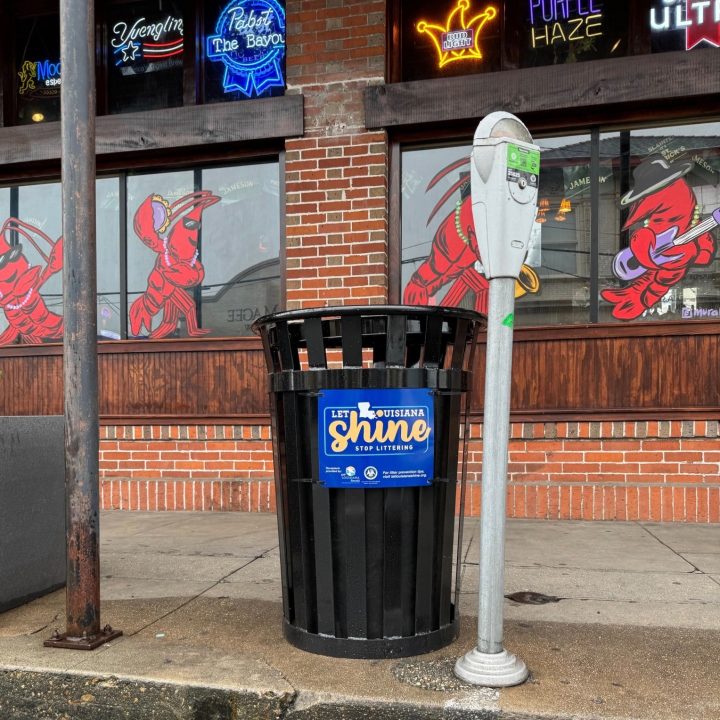
Deborah Carney
October 20, 2009
Mrs. Leontine (Tina) Harris
October 22, 2009The Terrebonne levee district’s application for permits from the Army Corps of Engineers to build another stretch of Morganza-to-the-Gulf hurricane protection levees has a strong chance of gaining approval, said Levee District Director Reggie Dupre.
However, an Oct. 6 letter written by Col. Alvin Lee, the corps’ New Orleans District Commander, to Dupre cautions that appropriate mitigation plans for impacts resulting from the project need to be submitted to the corps. The letter also states the levee district must secure necessary funding to carry out the mitigation needed.
The stretch of levees, part of Morganza’s Reach F, will run along the Houma Navigation Canal. The project includes a barge floodgate on the canal and one in Bayou Grand Caillou.
“This is the linchpin permit needed to move the first phase of Morganza forward,” Dupre said. “It tells me the corps is planning on granting the permit if we have adequate mitigation.”
Dupre is meeting this week with state and local officials to make tentative plans for mitigation on the project.
“By (this) week we will have a better idea of where we are with the permits,” he said.
The comment period on the application ended last week.
The levee district already has permits to start work on stretches H-1 and H-2 surrounding Dulac and on the Falgout Canal floodgate near Dularge.
Besides Reach F, Dupre said the levee district has an older permit pending for work not completed on the west side of Bayou Dularge. He said public notice will be issued for permits to build a section of Reach J near Pointe-aux-Chenes.
Berwick Duval, president of the Morganza Action Coalition in Houma, was also hopeful about the levee district gaining permits to build Reach F.
“But it’s on corps time, that’s not normal time,” he said. “Indications from the corps have been favorable. I’m cautiously optimistic.
“Having a floodgate in the Houma Navigation Canal is a big deal, at least it will protect Houma from storm surge. But it doesn’t have the benefit of a lock. It won’t prevent saltwater intrusion. The floodgate will only close with a high-water event.”
The barge floodgate on Bayou Grand Caillou is also significant, he said, and will be connected to the levee.
“But they will take a while to build even after the permits,” he said. “The basic permit says we have to mitigate for impacts, do a mitigation plan.”
Duval said an opening in the planned Bayou Grand Caillou floodgate needed to be expanded because boats passing through would create too great a current. Consequently, wording in the public notice for the permit was changed.
“Reach F had some modifications made,” said Steve Peyronnin, executive director of the Baton Rouge-based Coalition to Restore Coastal Louisiana. “The changing impact to the wetland area was not part of the original application.”
Peyronnin and Carleton Dufrechou, who was then executive director of the New Orleans-based Lake Pontchartrain Basin Foundation, wrote a letter to Lee in August objecting that the permit application does not sufficiently address environmental impacts.
More specifically, the application does not factor in the Multiple Lines of Defense Strategy advocated by the two environmental groups.
The plan emphasizes the role of barrier islands and wetlands in reducing storm surge and lessening the impact on levees, Peyronnin said.
The strategy also advocates elevating homes outside and within levee systems to prevent catastrophic flooding.
“Any type of infrastructure will impact the landscape,” Peyronnin said. “We support construction that has the least amount of impact on the environment that will protect the most people.”
He said permit applications should reflect that same stance.
The letter to Lee states, “Once the alignments of the permitted levees are fixed and constructed, they form a virtually immutable blueprint that precludes any evaluation of more effective, less costly and less harmful approaches.”
Louisiana and Terrebonne Parish are using the Morganza alignment created in 2002, Peyronnin said.
Congress authorized Morganza to the Gulf in 2007 but provided no funding in the bill. The Terrebonne levee district is building the Morganza system with around $150 million the district has for the project.
“It’s a sensitive area,” Peyronnin said. “You need hurricane protection, but you’re moving ahead on your own. The permit process is independent of the utility of each reach.”
The application for permits, he said, is deficient in several areas.
“A thorough analysis of alternatives, also mitigation plans, are some of the (factors) not in the permit that we’re asking to be part of the permit,” Peyronnin said.
The Lake Pontchartrain Basin Foundation’s new executive director, Ann Rheams, said she needed more time to study the application before commenting.










